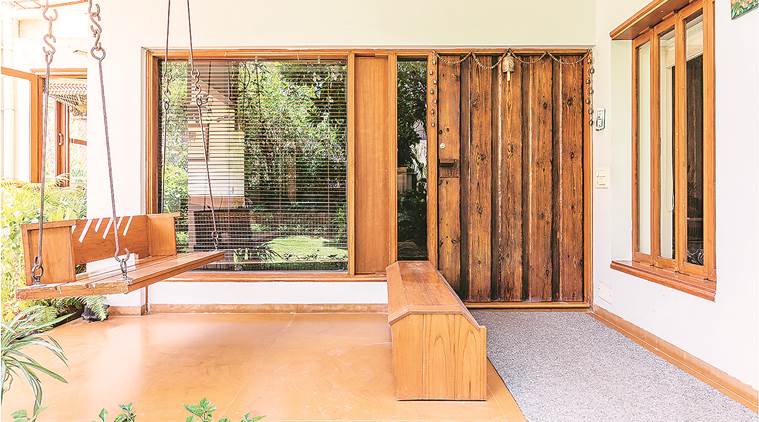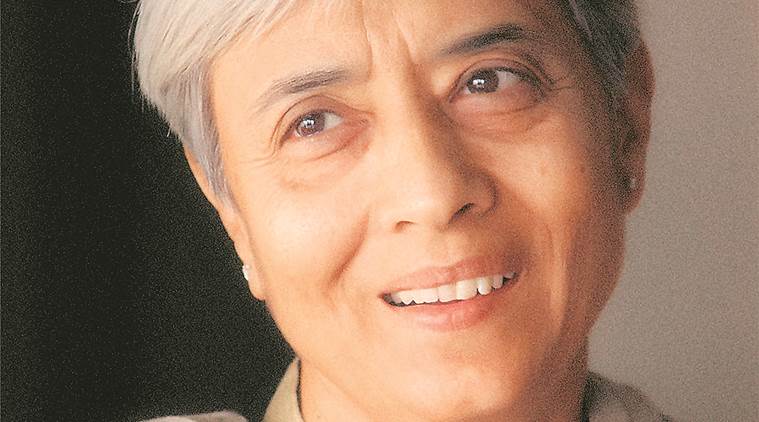Written by Shiny Varghese |Updated: January 18, 2019 12:26:03 am
In Pursuit of Happiness
An exhibition in Ahmedabad presents the work of Manisha Shodhan Basu, whose experiments in design privilege the emotional over the technical.

Architect Manisha Shodhan Basu remembers her grandmother’s garden, full of fruit trees and seasonal flowers, a house of verandahs and terraces. Panchavati (from where the area gets the name) was that home in Ahmedabad where 5,000 glass panes that covered it opened out to let light and air in. Long before she joined School of Architecture (now CEPT University), Manisha had learnt about sun paths and winds. The 1200-square-yard house built by her grandfather allowed for family activities to travel across verandahs based on the season. There was one for the morning, another for the evening, one for summer and a different one for winter. With nearly 21 members living in this joint family, Manisha grew conscious of light, air and movement that would be the telling features in all her projects as an architect and designer. “The house also taught me that you don’t need much decoration to bring in beauty into a home,” says the 69-year-old.

To celebrate her work, architect Riyaz Tayyibji of Anthill Design curated an exhibition “Odes to Happiness” at the iconic Mill Owner’s Association Building. The week-long show presented eight of Manisha’s residential projects through architectural drawings, models and photographs. Her furniture designs too are part of the display. “The idea of a monograph show was to look at the incrementality of her practice, how her inner strength exemplifies her philosophy of life, and to explore her quiet and confident experiments in design,” says Tayyibji. The exhibition has been brought together by the Navnitlal Bhagubhai Public Charity Trust.
Sticking true to one of her bedside reads — Alberto Campo Baeza’s The Built Idea — in which the Spanish architect says: “It is when an architect discovers that light is the central theme of architecture that he or she begins to understand; that they become a real architect.” Manisha earnestly seeks out light into every dark corner. In her first residence for Jyotindra and Gokul Shodhan in 1982, Manisha brought in memories of Panchavati into the house, with verandahs and cross ventilation. “I put a courtyard in the basement too so that the family has ample light and air in their home,”she says.
For one who believes that people should be dancing in their homes, in Hemangini and Sameer Sinha’s house in 1999, Manisha started with a zigzag sketch stroke, which gave an increased wall area for the art collector in Sameer. It also lends itself to cosy corners for Hemangini, a voracious reader, to find nooks for herself.
“I placed the staircase in such a way that they are with their painting when they go up and down,” she says, “I like humour, health, and happiness in my spaces; I like healing spaces.” It’s her master’s degree at the Royal Danish Academy of Art and Architecture, Denmark, and the Scandinavian way of life that opened Manisha to these ideas, which she would bring to her practice too. But her real teachers she says were the masons, carpenters, tilers and polishers on site.
She is very careful about how the windows should be stretched out, where the swing should be placed, or how people in the house should move about. It’s this attention to detailing that makes many clients lifelong friends. Manisha has also been a researcher at the National Institute of Design, and a design instructor at the School of Interior Design and Architecture at CEPT University. While her book Le Corbusier’s Villa Shodhan: A personal look at his last residential architecture, published by the Royal Danish Academy of Art and Architecture, 2008, was well-received, she’s tightlipped about her present one on Panchavati, the Shodhan family home, which she is still working on. In it, she hopes to privilege the emotional virtues of the house over its rational and technical details.






















No hay comentarios:
Publicar un comentario